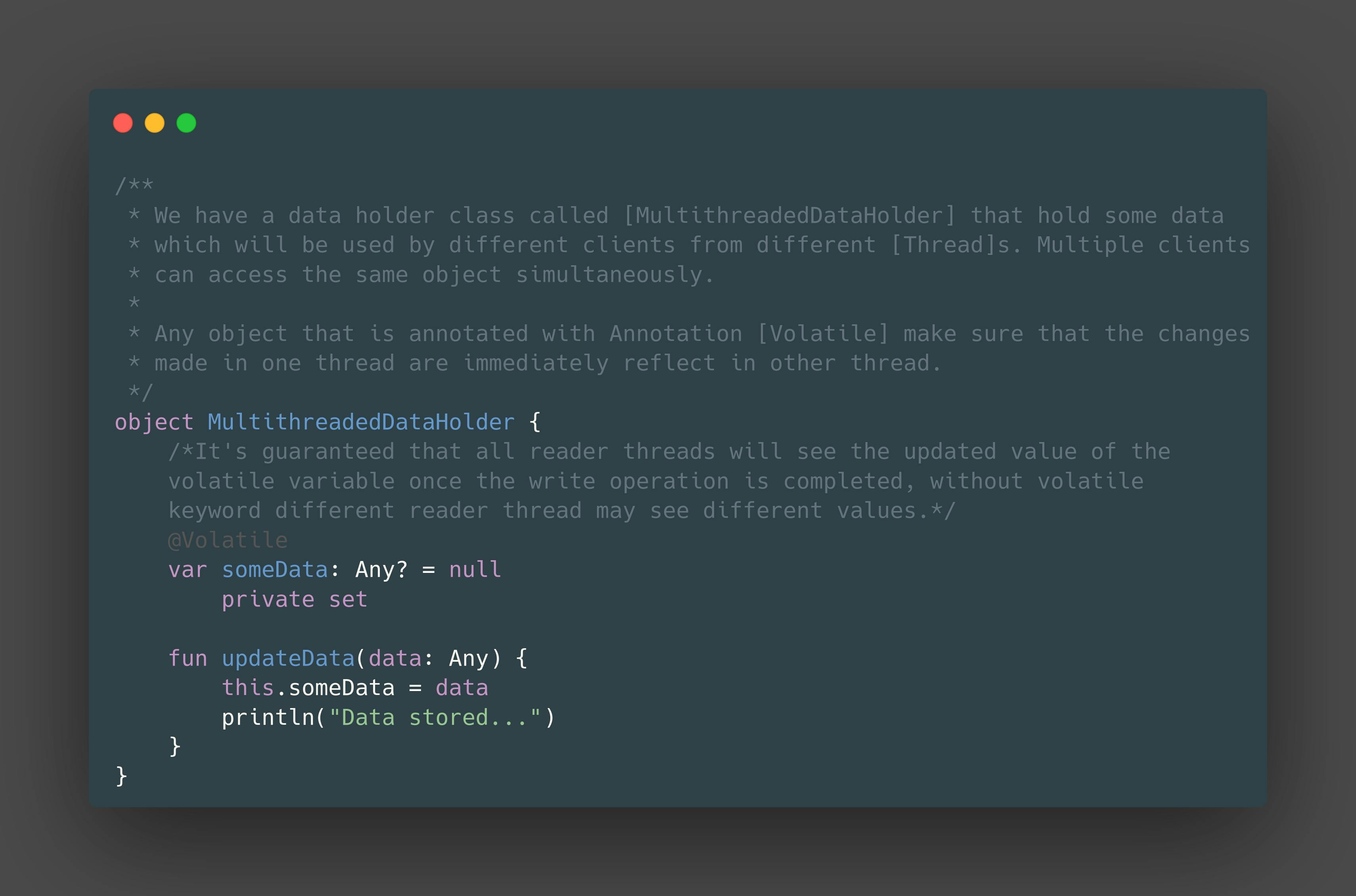Java/Kotlin : @Volatile
Marks the JVM backing field of the annotated property as volatile, meaning that writes to this field are immediately made visible to other threads.
Table of contents
If get to know something new by reading my articles, don't forget to endorse me on LinkedIn
What is @Volatile?
Volatile keyword is used to modify the value of a variable by different threads. It is also used to make classes thread safe. It means that multiple threads can use a method and instance of the classes at the same time without any problem. The volatile keyword can be used either with primitive type or objects. The volatile keyword does not cache the value of the variable and always read the variable from the main memory.
When to Use?
You can use a volatile variable if you want to read and write long and double variable automatically.
It can be used as an alternative way of achieving synchronization in Java/Kotlin.
All reader threads will see the updated value of the volatile variable after completing the write operation. If you are not using the volatile keyword, different reader thread may see different values.
It is used to inform the compiler that multiple threads will access a particular statement. It prevents the compiler from doing any reordering or any optimization.
If you do not use volatile variable compiler can reorder the code, free to write in cache value of volatile variable instead of reading from the main memory.

Kotlin Example:
object MultithreadedDataHolder {
@Volatile
var someData: Any? = null
private set
fun updateData(data: Any) {
this.someData = data
println("Data stored...")
}
}

